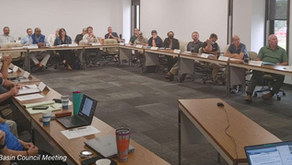Why Are Most Facilitators White College-Educated Women?
- JD Solomon
- Aug 8, 2023
- 4 min read

SessionLab recently released the outcome of the first comprehensive survey on the practice of facilitation, the State of Facilitation 2023. Are most facilitators white, college-educated women? The survey leads us to believe this to be the case. I don’t think so. This is why.
Survey Sources
Despite this growing interest, there is not much data on who facilitators are, how they learned their trade, and what tools and methods they use. With this yearly report, we bring our contribution to filling that gap.
In 2022 the global facilitation community was generous enough to provide over 1100 responses to this first-ever survey on the state of facilitation.
The Lonely Facilitator
97% of respondents stated they sometimes or most of the time work alone. Of the total respondents, 38% are either independent freelancers or the only facilitation professional in their company. We have to wonder: is this a lonely profession?
Communities
Over one-quarter of respondents, asked to name a professional community they are active in, said "none." The highest percentage went to in-house groups at the organization they currently work. The International Association of Facilitators (IAF) trailed behind, followed by several communities connected to a specific tool or methodology.
Education
Overall, facilitators are a highly educated cohort (90% having completed higher education degrees), but when we look at how people have learned facilitation, many different pathways emerge. Most respondents have no formal certification or training in facilitation, and many certificates refer to individual frameworks. Will future opportunities to learn facilitation skills emerge in the formal and nonformal education systems?
Age
The data also indicates a low number of facilitators, 3.4%, were between age 20 and 29. An additional 20.4% of respondents were between 30 and 39. That means only 25% of facilitators are classified as young professionals.
Gender
62.5 % of respondents described their gender as a woman. 34.2 identified as a man. Only 4.4% preferred not to say or identify as other.
Ethnicity
69.9 percent identified as being White or Caucasian. Asian or Asian American (9.2%), Hispanic, Latino or Spanish origin (8.6%), and Black or African American (5.5%) rounded out the top 4. In total, this top 4 represents 94% of all facilitators.
Job Roles
Respondents were asked to identify four roles that described what they did in their jobs. Over 50% described their role as either (or both) Facilitator and Consultant, over 30% as Trainer / Learning & Development and Coach, and nearly 20% of respondents as Teacher / Educator, Learning Designer.
A mere 2% identified themselves as engineers (or some other form of technology-trained professional).
Facilitation Training and Certification
When it comes to professional education, though, almost 50% of respondents stated they have no certification related to facilitation at all.
Key Survey Conclusion
The main profile, in short, would be a white (70%) middle-aged (61%) college-educated (90%) woman (63%) from North America and Western & Northern Europe (58%).
Not So Fast
Of the over 1100 respondents, only 9% come from Asia, 7% from Oceania, and 7% from Africa.
The sample might have stayed close to those working on the study.
Facilitators acting in their local communities might have missed the existence of an international study.
“Facilitator" is becoming familiar in English but not so well-known for those speaking Romance languages. There might be many other reasons, but let's go to some of the important matters that should also be looked at as future challenges.
Most facilitators work in their own organizations. In some ways, facilitation is becoming widespread as a transversal competence among leaders and the general workforce. Is it considered a formal role in many organizations, or just a soft skill that a professional should have?
Technically Trained Professionals
The survey aligns with much of what I have experienced in the wild with facilitation. Most technically trained professionals are highly educated in their specialties (hard skills) but lack formal training in people-related (soft) skills. For those who specialize in facilitation, at best, we work as part of small groups; at worst, we are lone wolfs.
In my experience, in technical fields, the gender alignment matches closely with that of the given industry. There are indeed more men than women facilitating in technical fields and are therefore under-represented in the survey. However, as the survey states, in many technical fields, those facilitating (or their organizations) do not recognize facilitation as one of their primary roles. There is a lack of training, although the quality of the facilitation has a large impact on results.
Facilitating with FINESSE
Facilitation, or guiding a group to solutions that are created, understood, and accepted by all, is under-emphasized as a craft by most technically trained professionals. It is one reason we see so few training and books on the subject, or even chapters in guidance documents on subjects like root cause analysis, failure modes, and effects analysis, or risk management. The solution? From one who practices what he preaches, get in the game!
The numbers and the related commentary on the survey come directly from the SessionLab report. Read the report for more information, insights, and inspiration.
JD Solomon Inc provides solutions for program development, asset management, and facilitation solutions at the nexus of facilities, infrastructure, and the environment. Subscribe for monthly updates related to our firm.
JD Solomon is the author of Communicating Reliability, Risk & Resiliency to Decision Makers: How to Get your Boss’s Boss to Understand and Facilitating with FINESSE: A Guide to Successful Business Solutions.




Comments